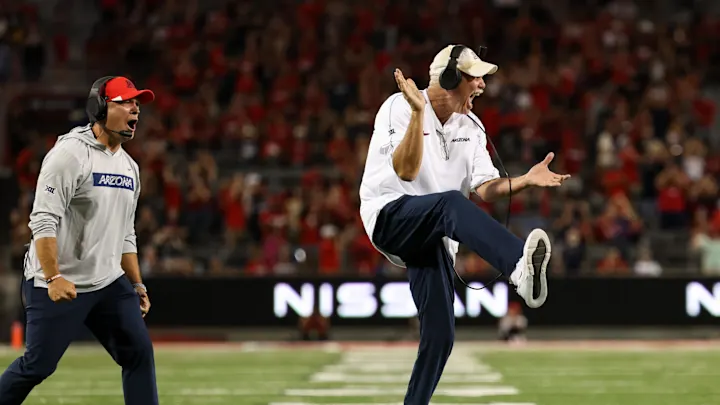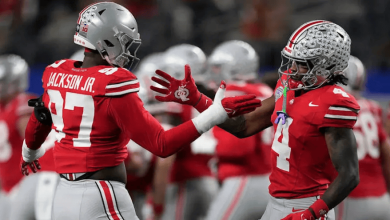Terry Joseph is replaced with a new defensive back coach for the Texas Longhorns.

Terry Joseph Replaced as Defensive Backs Coach for the Texas Longhorns: A New Era in the Secondary
The Texas Longhorns football program is one of the most iconic programs in college football, with a rich tradition of success and a fanbase that expects excellence every season. However, despite the rich history, Texas has struggled in certain aspects of the game in recent years, particularly in areas of defense. Defensive consistency has been one of the most significant challenges for the Longhorns since the mid-2000s, especially in their secondary. The Longhorns have routinely been one of the most talented teams in the country, but defensive struggles—particularly in the secondary—have prevented them from competing for national championships on a consistent basis.
One of the most high-profile changes in the Texas Longhorns football program for the 2025 season is the replacement of Terry Joseph, the former defensive backs coach, with a new coach. Joseph, who had been with the program for several seasons, was tasked with developing a secondary that could live up to the long-standing expectations of Texas football. His departure from the program has raised eyebrows and questions regarding the direction of the Texas defense moving forward. In this article, we’ll explore the impact of Terry Joseph’s departure, the reasons behind the coaching change, and what it means for the future of the Texas Longhorns defense.
Terry Joseph’s Tenure at Texas: Successes and Struggles
Terry Joseph arrived at Texas in 2021 as the defensive backs coach under head coach Steve Sarkisian. As part of Sarkisian’s rebuilding effort, Joseph was expected to improve a secondary that had struggled to produce consistent results in the Big 12. The Longhorns had some talented players in the secondary during Joseph’s tenure, but the defense as a whole was inconsistent, and the secondary never quite lived up to its potential under his leadership.
Joseph’s tenure at Texas was marked by moments of promise, but those moments were often fleeting. Under his guidance, the Longhorns were able to recruit a strong group of defensive backs, including players like Jerrin Thompson, Deshaun Jamison, and others who showed flashes of potential. However, as the seasons progressed, it became clear that Texas was still giving up big plays in the passing game, particularly against top-tier opponents.
One of the most glaring weaknesses in Joseph’s time with Texas was the team’s inability to consistently cover talented wide receivers and defensive schemes that struggled to contain the explosive offenses in the Big 12. While Joseph had success developing individual players who showed moments of brilliance, the overall play of the secondary never seemed to improve enough to put Texas in a position to win Big 12 championships or compete at a national level.
Texas also faced significant issues with depth in the secondary during Joseph’s tenure, which further complicated matters. Injuries to key players and lack of consistent development from the younger defensive backs left the Longhorns’ secondary vulnerable in high-stakes situations. The program’s defense, as a whole, continued to lack the consistency required to elevate the team into championship contention.
Despite the challenges, Joseph did show that he could recruit elite talent, and his ability to develop individual players had some positive results. However, when it came to making the Texas secondary one of the best in the country—a goal for any Texas defensive backs coach—the results were simply not there. This led to growing criticism among fans and analysts who expected more from a program with such a storied tradition of success.
The Coaching Change: Why Terry Joseph Was Replaced
While Terry Joseph’s tenure at Texas had its ups and downs, the decision to part ways with him was ultimately a reflection of the need for a change in direction for the Texas defense, particularly in the secondary. As Texas has made it clear that they are looking to become a serious national championship contender, the pressure on defensive coordinator Pete Kwiatkowski and his staff has only intensified. The secondary has been a significant Achilles’ heel for the Longhorns, and with the team preparing for a move to the SEC—a conference known for its heavy emphasis on strong defenses—the Longhorns needed to make a bold move in order to compete at the highest level.
Several factors contributed to the decision to replace Terry Joseph, including:
- Inconsistent Play in the Secondary: As mentioned earlier, the Texas secondary struggled with consistency under Joseph’s leadership. Despite having talented players, they were frequently caught out of position, gave up too many big plays, and failed to execute in high-pressure situations. With the talent available on the roster, many expected more from the Longhorns’ defensive backs.
- Recruiting Misses: Although Joseph did help land some talented recruits, there were also several instances where the Longhorns missed out on top-tier defensive backs. As Texas continues to compete with SEC powers like Alabama, Georgia, and LSU for elite talent, it became clear that the Longhorns needed someone with a proven track record of recruiting and developing elite defensive backs.
- Texas’ SEC Move: The Longhorns’ move to the SEC means that they will face much stiffer competition in the coming years, particularly in the passing game. SEC teams like Alabama, Georgia, and Florida have consistently boasted some of the best offenses in the nation, which means Texas must upgrade its secondary if it hopes to compete at the highest level. The need for a more experienced and effective defensive backs coach became even more pressing.
- Expectations of Championship-Level Defense: As a program with national championship aspirations, Texas could no longer afford to settle for anything less than a top-tier defense. The inability of Joseph’s secondary to produce consistently put the Longhorns at a disadvantage, and a coaching change was seen as necessary to take the next step.
The New Defensive Backs Coach: A Fresh Start for the Secondary
With Terry Joseph out as defensive backs coach, the Texas Longhorns are entering a new era for their secondary. While the search for Joseph’s replacement is ongoing, the new coach will inherit a talented, but inconsistent, group of defensive backs who have shown potential but have not consistently performed at a high level. The expectation is that the new defensive backs coach will bring fresh ideas, new techniques, and improved player development to the Texas defense, allowing the Longhorns to field one of the most dangerous defensive backfields in the nation.
The new defensive backs coach must address several key areas of concern:
- Improved Fundamentals and Coverage: One of the key areas that has held Texas’ secondary back is their inability to cover opposing wide receivers consistently. Whether it’s a lack of ball skills, poor positioning, or missed tackles, Texas has struggled to stop opposing passing attacks. The new coach will need to emphasize fundamentals and work on the basics—such as footwork, hand placement, and high-pointing the ball—to help the secondary improve across the board.
- Building Depth and Consistency: The secondary has often been plagued by injuries and lack of depth, forcing the Longhorns to rely on younger, less experienced players. Building up the depth of the secondary will be crucial for the future of Texas defense. The new coach will need to identify and develop talent at all positions, from cornerback to safety, to ensure that the Longhorns have a reliable and versatile defensive backfield.
- Recruiting Elite Defensive Backs: Given the immense talent that Texas has at its disposal, the new defensive backs coach must be a strong recruiter capable of landing top-tier defensive backs. As the Longhorns look to compete with SEC powers for the best talent, recruiting must be a top priority. Texas has the resources, and the new coach must leverage those resources to build one of the nation’s top defensive backfields.
- Adapting to the SEC: As Texas prepares to join the SEC, the Longhorns’ defense will need to adapt to the fast-paced, high-powered offenses that dominate the conference. The new defensive backs coach must be familiar with the style of play in the SEC and ensure that Texas is ready to face the league’s high-caliber quarterbacks and wide receivers. This will require both tactical adjustments and a focus on developing players with the skills necessary to excel in the SEC.
The Road Ahead: What’s Next for the Longhorns Secondary?
Replacing Terry Joseph as defensive backs coach represents a significant shift for the Texas Longhorns as they look to improve their defense heading into the SEC era. The pressure on the new coach will be immense, as Texas fans expect results quickly. The new coach must hit the ground running, developing players, improving consistency, and recruiting elite talent to ensure that the Longhorns secondary is ready to compete at the highest level.
While the decision to part ways with Terry Joseph was difficult, it was ultimately a necessary step in the Longhorns’ pursuit of greatness. The secondary is an area that has held Texas back in recent years, and the time for change has arrived. By making this move, Texas is signaling its commitment to returning to prominence in college football and competing for championships on a national stage.
As the Longhorns prepare for their move to the SEC and the challenges that await them, they will need a strong, consistent secondary to compete with the best. The hiring of a new defensive backs coach will play a key role in determining the future of the Texas defense, and with the right leadership, the Longhorns’ secondary could once again become one of the most formidable units in college football.









